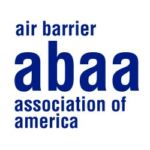Member Spotlight: André Desjarlais
The Air Barrier Association of America (ABAA) dives inside the career of André Desjarlais, Program Manager for Oak Ridge National Laboratory in Oak Ridge, TN. In this feature interview, learn what made him become an ABAA member, what led him to a career as an engineer and get his perspective on the future of the air barrier industry.
 André Desjarlais is the Program Manager for the Building Envelope and Urban Systems Research Program at the Oak Ridge National Laboratory. He has been involved in building envelope and materials research for over 45 years, first as a consultant and, for the last 30 years, at ORNL. Areas of expertise include building envelope and material energy efficiency, moisture control, and durability. Desjarlais has been a Member of American Society for Testing and Materials (ASTM) since 1987 and serves on Committees C16 on Thermal Insulation, D08 on Roofing, and E60 on Sustainability. He is the past Chairman of ASTM Committee C16 and was awarded the title of Fellow in 2011. He has been a member of ASHRAE since 1991 and serves on Technical Committees TC 4.4 on Thermal Insulation and Building Systems, TC 1.8 on Mechanical Insulation Systems, and TC 1.12 on Moisture Control in Buildings, and is past Chairman of TC 4.4.
André Desjarlais is the Program Manager for the Building Envelope and Urban Systems Research Program at the Oak Ridge National Laboratory. He has been involved in building envelope and materials research for over 45 years, first as a consultant and, for the last 30 years, at ORNL. Areas of expertise include building envelope and material energy efficiency, moisture control, and durability. Desjarlais has been a Member of American Society for Testing and Materials (ASTM) since 1987 and serves on Committees C16 on Thermal Insulation, D08 on Roofing, and E60 on Sustainability. He is the past Chairman of ASTM Committee C16 and was awarded the title of Fellow in 2011. He has been a member of ASHRAE since 1991 and serves on Technical Committees TC 4.4 on Thermal Insulation and Building Systems, TC 1.8 on Mechanical Insulation Systems, and TC 1.12 on Moisture Control in Buildings, and is past Chairman of TC 4.4.
Name: André Desjarlais
Title: Program Manager
Firm: Oak Ridge National Laboratory
City: Oak Ridge, TN
ABAA member for 8 years
What was the path to your career — how and why did you pursue a profession as an engineer?
A: I have always wanted to be an engineer for as long as I can remember. I enjoy math and technical challenges.
Is there anything that you believe everyone in this industry should be working towards?
A: Producing the most cost-effective durable building for consumers.
What role have peers, mentors, or advisors played in your career?
A: My original mentor was my first supervisor. Ron Tye was originally from the UK and had worked for the National Physical Laboratory there before coming to the USA. He thought me the value of details and how even the smallest problem deserved my entire attention.
What led you to become an ABAA member?
A: Airtightness has a huge impact on the energy efficiency of buildings and the Department of energy wanted more research focus in that area.
Are you involved in any ABAA committees? Do you have any ABAA certifications?
A: I am on the Audit, Research, and Existing Buildings committees.
How long have you been in the industry?
A: 47 years.
What major changes have you seen?
A: Probably the biggest change that has occurred during my tenure is the increased focus on energy efficiency. When I started my career, energy was inexpensive and there were no energy codes. I have been able to witness the maturation of the energy efficiency movement from its conception.
What traits or skills do you think are necessary to be able to succeed in your industry?
A: Flexibility is critical. Changes in political administrations typically yield refocusing your research directions. You need to respond quickly to the changing demands.
Do you have any advice for anyone starting out in your field?
A: Have patience and seek out a mentor. Having someone who knows the landscape directing your actions is critical. Things change slowly; prepare yourself for the inevitable opportunity.
How much demand do you think there is for people in your profession?
A: As the demands we make on our building become more complex, the need for developing building envelope solutions requires more thoughtful design and scientists to help develop solutions.
What do you think the industry will look like in five or ten years’ time?
A: Hard question to answer with COVID-19 possibly altering everything we do. In the future, buildings will be used as “batteries” where local utilities will be able to store and retrieve energy on demand. Buildings will no longer be simply passive structures but will be able to modify their performance to meet ever-changing short-term demands.
